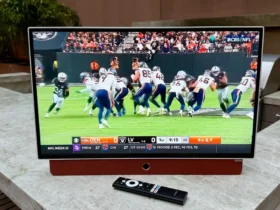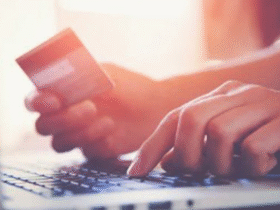The digital marketing landscape is always evolving, and today, artificial intelligence (AI) is at the forefront of this transformation. One of the most exciting innovations is the use of AI art generators. These tools are reshaping how marketers create content and engage with their audience. In this blog post, we’ll explore the ins and outs of AI art generators and how they can be leveraged to enhance your marketing efforts.
Understanding AI Art Generators
What are AI Art Generators?
AI art generators are software applications that use machine learning algorithms to create art. These tools can produce a wide range of artistic outputs, from graphic designs to textual art. At their core, AI art generators analyze vast datasets of existing artworks and use this information to generate new pieces. This capability allows them to mimic various artistic styles and create unique, never-before-seen content.
How Do They Work?
These generators typically use neural networks, particularly a subset known as Generative Adversarial Networks (GANs). GANs consist of two parts: a generator, which creates new images, and a discriminator, which evaluates the authenticity of these images. The two networks work together, continually improving the quality of the art generated. The result is highly sophisticated artwork that can be used across multiple marketing platforms.

Types of AI Art
AI art isn’t limited to visual content. While many think of AI-generated images and graphics, textual art is also gaining traction. Text-based AI generators can create compelling headlines, ad copy, and even entire articles. This versatility makes AI art generators a valuable tool for marketers looking to diversify their content strategies.
Benefits of AI Art in Marketing
- Unique Visual Appeal
One of the standout benefits of AI art generators is their ability to produce unique and visually stunning content. Unlike traditional graphic design, which is limited by human creativity and time constraints, AI can generate countless variations quickly. This unique visual appeal can set your marketing materials apart from the competition.
- Cost-Effective Content Creation
Creating high-quality content is often costly and time-consuming. AI art generators streamline this process, allowing marketers to produce high-quality visuals without the need for extensive design resources. This cost-effectiveness can be particularly beneficial for startups and small businesses that may not have large marketing budgets.
- Examples of Success
Several brands have already started to capitalize on AI art in their marketing campaigns. For instance, fashion brands have used AI to create virtual models and clothing designs, while tech companies have employed AI-generated graphics in their product launches and social media campaigns. These examples highlight the versatility and effectiveness of AI art in various marketing contexts.
How to Use AI Art in Your Marketing Strategy
Integrating AI Art into Social Media
Social media is a perfect platform for showcasing AI-generated art. From eye-catching Instagram posts to engaging Facebook ads, AI art can help brands capture attention and boost engagement. Start by identifying your target audience and experimenting with different styles to see what resonates best.
Enhancing Email Campaigns
Incorporate AI art into your email marketing campaigns to create visually appealing newsletters and promotional emails. Use AI-generated visuals to complement your text and make your emails more engaging. Personalized AI art can also be used to tailor content to individual subscribers, enhancing their experience and increasing conversion rates.
Optimizing Your Website
Your website is often the first point of contact for potential customers, so it’s crucial to make a strong impression. Use AI-generated images and graphics to enhance your website’s visual appeal. Whether it’s creating a unique homepage background or designing custom infographics, AI art can help your website stand out.
Challenges and Considerations
Copyright Concerns
One of the primary challenges of using AI art is navigating copyright issues. Since AI generates art based on existing datasets, there’s a risk of inadvertently copying someone else’s work. To mitigate this, ensure that you’re using AI tools that have built-in safeguards against copyright infringement and always verify the originality of the generated content.
Ethical Considerations
Ethical considerations also play a significant role in the use of AI art. Questions about the authenticity and originality of AI-generated content can arise, as well as concerns about the impact on human artists. It’s essential to use AI as a complement to human creativity rather than a replacement and to be transparent about the use of AI in your marketing materials.
Overcoming Challenges
To address these challenges, adopt a proactive approach. Regularly audit your AI-generated content for any potential copyright issues and stay informed about the latest developments in AI ethics. Additionally, consider forming partnerships with human artists to blend AI-generated and human-created art, ensuring a balanced and ethical approach.
Future Outlook
Emerging Trends
The future of AI art in marketing looks promising, with several emerging trends set to shape the industry. One such trend is the integration of AI with augmented reality (AR), allowing for interactive and immersive marketing experiences. Additionally, advancements in AI technology will continue to enhance the quality and diversity of generated art.
Impact on Industries
AI art is poised to have a profound impact on various industries beyond marketing. The fashion industry, for example, is already leveraging AI to create custom clothing designs and virtual fashion shows. Similarly, the entertainment industry is exploring AI-generated content for movies, video games, and music.
Staying Ahead
To stay ahead of the curve, marketers should continuously explore new AI tools and technologies. Experiment with different AI art generators, stay updated on industry trends, and be open to integrating AI into various aspects of your marketing strategy. By doing so, you’ll be well-equipped to leverage the full potential of AI art.
Conclusion
AI art generators are revolutionizing the marketing landscape, offering unique advantages that can elevate your marketing strategies. From creating visually stunning content to streamlining the content creation process, AI art is a powerful tool for marketers. However, it’s essential to be mindful of the challenges and ethical considerations associated with AI art. By adopting a balanced and proactive approach, you can harness the transformative potential of AI art to achieve your marketing goals. Ready to take your marketing to the next level? Start exploring AI art generators today and see the impact they can have on your campaigns.














Leave a Reply